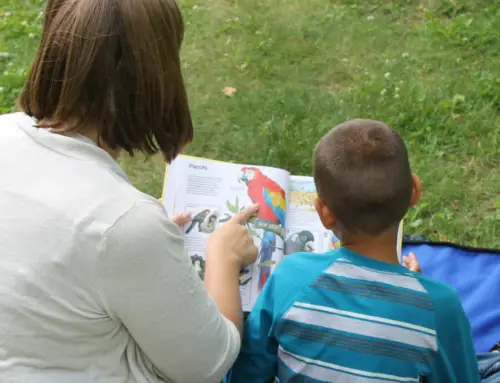Do you have a reluctant reader in your house? I do! Grasshopper is not a big fan of reading for pleasure. Because he’s dyslexic I don’t really push it on him too much. After all he’s still learning how to read, and I don’t want to push him too hard and make it stressful for him. I also want to be extremely careful not to turn reading into a chore. I want him to not only want to read, but love it too! So just how are we to motivate our reluctant readers to help them enjoy reading?

Grasshopper loves hearing stories. He’ll listen during read aloud time and we frequently use audio books in the car. I acknowledge the fact that audio books are a great option, especially for our dyslexic kids. However, I also want him to continue to work on his reading skills. This is especially true during the summer months when we’re not daily working on reading lessons.
Reward System
We’ve developed a reward system in our house to encourage reading for pleasure. I didn’t want to bribe him with a reward every day he does some extra curricular reading, so I developed a reading chart.
Using the chart, he must read 20 times before earning his reward. The reward can be anything you want it to be. Maybe they’ll earn $5, or a special treat. Maybe they’ll be able to go out for ice cream, or go bowling after completing their reading chart. Find something that will motivate your child.
Discuss reward possibilities with your reader. I suggest you ask them for their reward ideas and offer a few of your own suggestions. Together come up with a reward they can work toward earning.
How to Use the Chart
While using the reading chart should be modified to what will work best for your kids, I do have a few suggestions. Make sure your child knows that reading for school doesn’t count for the reading chart. For example, their lesson in reading class doesn’t mean they get to color in a circle on the reading chart.
When it comes to filling in a circle on the reading chart you can go by chapters or time spent reading. In our home, we let Grasshopper color in a circle for each 15 minutes spent reading for pleasure. For younger readers, maybe they fill in a circle for each book they read.
You might want to put a daily cap on the number of circles they can fill in each day. I suggest they can only complete 2 a day. This will help them make reading more of a daily habit. If it’s easy for them to complete several circles a day, perhaps you need to reevaluate how much reading they need to do before filling in a circle.
Remember the Goal For Your Reader
Remember, the goal here is to encourage your reluctant reader to want to read. Resist the urge to give them assignments related to the book they’re currently reading. Maybe you can throw in a simple book report after one of the books they read, but be careful not to turn this into an assignment. Doing this can backfire on you. Rather than making reading fun, assignments can turn reading into a chore. Get them to enjoy reading first, then start implementing assignments when they genuinely want to read.
Also, choose high interest books. Find some books that your child will be interested in. If you want them to experience getting lost in a story, make sure it’s a story line that fits with their interests.
How do you encourage your reluctant reader? Comment below with your ideas!







Back when my kids were learning to read, I gave them rewards, too. Learning to read is hard work!
especially when they don’t want to!